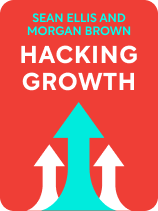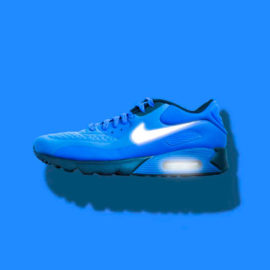

This article is an excerpt from the Shortform book guide to "Hacking Growth" by Sean Ellis and Morgan Brown. Shortform has the world's best summaries and analyses of books you should be reading.
Like this article? Sign up for a free trial here.
Are your customers happy about their experience with your brand? How does customer experience affect your bottom line?
Excellent customer experience is what gets people to stick around and become loyal to your brand, ensuring a strong bottom line. Therefore, improving customer experience should be an ongoing effort of any business.
Here’s how to elevate your customers’ experience in three steps.
Elevate Your User Experience
Improving customer experience is important for any kind of business, especially in today’s competitive marketplaces. The better your customers’ experience with your company, the more customers you will retain and the more referrals you’ll receive.
To provide a great customer experience and retain your customers, you must make it easy for your customers to get a taste of the core value of your product. Follow the authors’ three steps to do this:
- First, map the steps to your click moment: Identify each step users must take to reach the core value of your product—everything from signing up and payment to product tutorials.
- Next, measure how far people get toward that moment: Analyze your data and create a report that shows how many users “bounce” (leave the website) at each step.
- Then, survey your users: Reach out to users who did and didn’t drop at each step. Ask those who left what caused them to bounce, and ask those who stayed why they stuck around.
These three steps give you a clear picture of what you can adjust to get more users to reach your product’s core value. According to the authors, you often need to reduce friction—things that slow down or complicate the process—to get more users to follow through.
| What Is User Experience Design? The authors don’t go into detail on the basics of user experience design, so we’ll discuss it briefly for context. “User experience” (UX) refers to how your users interact with and experience your product; UX design means crafting a user experience that gets users to have the interactions and experiences you want them to. In other words, you can design your product and website to increase the chances that your users have a good experience. UX design isn’t just digital, though. One great example of physical UX design is Apple’s packaging of iPhones—user experience is that moment when you open the sleek, clean new phone box and reveal everything placed neatly inside. Good UX design should emphasize several key features: 1) User-Friendly: The product should be easy to use and not confusing. 2) Solve a problem: Any good product must be a valuable solution to your user’s problem. 3) Appealing: Good UX design should be visually and aesthetically appealing. |
The authors recommend two core strategies to reduce friction and optimize for user engagement:
Strategy #1: Optimize your new user experience (NUX)—First, eliminate friction in your new user experience. A bad NUX causes customers to bounce, whereas a good NUX helps users see how your product can become a valuable part of their daily lives. The authors recommend running growth hack experiments on your NUX’s landing page, language, aesthetics, and any steps the users have to take. They also suggest trying single sign-on (using an existing account with a major tech company to quickly create a new one) and/or giving users a free trial that highlights the core value of your product.
(Shortform note: Note that when designing your website—landing page, sales pages, and so on—there’s a fine line between “scrappy” and “shady” design. In 2010, UX designer Harry Brignull founded deceptive.design (formerly darkpatterns.org) to inform consumers of what he argues are unethical design tricks. Deceptive design patterns involve making it difficult to back out of subscriptions, adding hidden fees and costs to purchases or subscriptions, and misdirecting the user’s attention with colorful buttons and easy-to-miss text.)
Strategy #2: Use triggers to keep users coming back—Triggers are prompts that get people to respond or react in some way. These include push notifications, emails, and calls to action. Whatever triggers you use, make sure they concisely remind the user of your product’s value or alert them to a new feature or upgrade. According to the authors, you can use triggers to get users to form a habit of using your product. However, be aware that people are targeted by endless triggers today. If you overdo it or lack finesse, customers might think you’re annoying or even sleazy and corrupt.
(Shortform note: One reason to avoid going overboard with triggers is that once you lose your customer’s trust, you might struggle to get it back—if you can at all. In addition, some argue that it’s best to avoid using triggers that cause customers to have negative emotions. This could include using artificial scarcity to induce anxiety that leads to a purchase, or causing people to feel that they’re going to suffer or struggle without your product.)

———End of Preview———
Like what you just read? Read the rest of the world's best book summary and analysis of Sean Ellis and Morgan Brown's "Hacking Growth" at Shortform.
Here's what you'll find in our full Hacking Growth summary:
- Why the old approaches to marketing no longer work in a high-tech world
- How to rapidly increase your revenue and grow your business
- A step-by-step guide on how to use the growth hacking method






